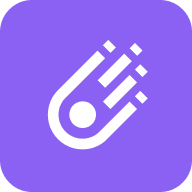-
 CreatieVisit Website
CreatieVisit WebsiteAI UI/UX design suite: text-to-design, prototyping, handoff, teamwork.
5Website Freemium Paid Contact for pricing -
Learn More
What is Creatie AI
Creatie AI is an intuitive, affordable, AI-powered product design platform that streamlines the UI/UX workflow from idea to handoff. It converts natural-language prompts into wireframes and high-fidelity layouts, supports prototyping, and enables collaboration across designers, product managers, developers, and stakeholders. Built-in AI enhances or edits images and flags style inconsistencies to uphold your design system. With exploration, review, and developer-ready specs in one place, teams iterate faster and deliver cohesive product experiences.
Creatie AI Main Features
- Prompt-to-design generation: Turn text prompts into wireframes or polished UI proposals to accelerate early ideation and reduce blank-canvas time.
- AI image enhancement and editing: Improve, retouch, or adjust visuals directly in the design context to keep assets consistent and on-brand.
- Style and consistency checks: Automatically detect spacing, color, and typography inconsistencies to align work with your design system.
- Interactive prototyping: Link screens, define user flows, and preview interactions to validate UX before development.
- Collaboration and review: Invite stakeholders to comment, provide feedback, and converge on decisions without switching tools.
- Design handoff: Share developer-ready specs and assets so engineers can implement accurately and reduce rework.
- End-to-end workflow: Move from concept to prototype to handoff in a single environment for clearer ownership and faster delivery.
- Cost-effective tooling: An affordable approach to modern, AI-powered UI/UX design without heavy overhead.
-
 PureCode AIVisit Website
PureCode AIVisit WebsiteContext-aware UI copilot: generate components, ship 50% faster.
5Website Freemium Paid Contact for pricing -
Learn More
What is PureCode AI
PureCode AI is an AI-powered copilot that accelerates UI development by up to 50%. It analyzes your repository to build deep codebase context, then uses that understanding to generate framework-ready UI components, suggest refactors, and plan implementations that align with your architecture and conventions. By respecting existing design tokens, components, and coding patterns, PureCode AI reduces boilerplate, improves consistency, and shortens review cycles—helping front-end and full‑stack teams ship reliable, user‑facing features faster with fewer handoffs.
PureCode AI Key Features
- Codebase-aware generation: Indexes your project to understand imports, state management, routing, and style systems, producing components that fit your stack.
- UI component scaffolding: Generates new components and variations with sensible props, structure, and styling aligned to your conventions.
- Implementation planning: Proposes step-by-step plans with affected files, dependencies, and rationale to keep changes transparent and reviewable.
- Refactoring assistance: Identifies duplication, extracts reusable pieces, and simplifies oversized components to improve maintainability.
- Design system alignment: Encourages consistent usage of existing primitives and patterns to prevent divergence from your design system.
- Contextual suggestions: Offers in-flow guidance, explanations, and change previews so developers remain in control.
- Safe application: Presents diffs for review, enabling dry runs, incremental adoption, and quick rollbacks if needed.
-
 Visit Website
Visit Website
-
Learn More
What is Motiff AI
Motiff AI is an AI-driven UI design platform that pairs a professional editor with generative and analytic features. Teams can turn text prompts and reference images into editable layouts, explore multi‑variant revisions, create reusable local modules, and adjust visuals with built‑in image tools. Motiff extracts live websites into structured designs, writes, translates, and polishes microcopy, and analyzes files to surface suggestions. Cloud collaboration, design systems, and prototyping streamline concept‑to‑handoff. Smooth migration from Figma and Sketch, design‑code consistency, and MCP links to AI coding tools speed delivery. Motiff AI 2.0 is in beta with early access.
Motiff AI Key Features
- Text‑ and image‑to‑design generation: Convert prompts and reference images into editable UI layouts and components.
- Multi‑variant revisions: Instantly explore multiple design directions and iterate without starting from scratch.
- Local modules/components: Create reusable modules to enforce consistency and accelerate updates.
- Built‑in image editing: Modify visuals directly in context to keep design flow uninterrupted.
- Website‑to‑editable design: Extract online pages into structured layers you can edit and reorganize.
- AI writing and localization: Write, translate, and refine microcopy for UX clarity and multilingual products.
- Design analysis and suggestions: Get AI feedback on hierarchy, spacing, copy, and accessibility heuristics.
- AI shortcuts: Generate quick actions to complete repetitive tasks faster.
- Professional interface editor: Full‑featured UI tooling for precision layout and visual design.
- Design systems: Tokens, components, and guidelines to scale brand consistency.
- Prototyping in the cloud: Create and share interactive flows for feedback and testing.
- Team collaboration: Real‑time, cloud‑based co‑editing and reviews.
- Design‑to‑code consistency: Streamlined handoff to engineering with predictable specs.
- MCP protocol support: Seamless integration with AI coding tools and developer workflows.
- Easy migration: Import work from Figma and Sketch to continue where you left off.
-
 PlerdyVisit Website
PlerdyVisit WebsitePlerdy AI boosts CRO with heatmaps, session replay, A/B tests, SEO insights.
5Website Freemium Free trial -
Learn More
What is Plerdy AI
Plerdy AI is a conversion rate optimization (CRO) platform that transforms website behavior data into actionable insights. It combines AI-enhanced analytics with practical on-site tools to help teams track, analyze, and convert visitors. Core capabilities include website heatmaps, session replay software, A/B testing tools, conversion funnel analysis, event tracking, and ecommerce analytics. Built-in pop-up software and website feedback tools enable quick experiments, while an SEO checker highlights technical and content issues affecting rankings. Together, these features streamline CRO workflows and support sustained growth.
Plerdy AI Main Features
- Website heatmaps: Visualize clicks, scroll depth, and attention to find UX friction and prioritize design changes.
- Session replay software: Watch anonymized user sessions to diagnose issues that analytics alone can’t explain.
- Pop-up software & feedback tools: Launch targeted pop-ups, surveys, and on-site forms to capture leads and gather user insights.
- Ecommerce analytics: Track product views, add-to-cart behavior, and checkout steps to improve purchase flow.
- Event tracking tools: Measure custom interactions (CTA clicks, form submits, menu usage) without heavy engineering work.
- Website funnel analysis: Map journeys and identify drop-off points across critical conversion paths.
- A/B testing tools: Experiment with messaging, layouts, and UI elements to validate improvements with data.
- SEO checker: Surface on-page and technical SEO issues that influence visibility and organic traffic quality.
- AI-enhanced insights: Use intelligent prioritization and pattern detection to focus on high-impact opportunities.
-
 Galileo AIVisit Website
Galileo AIVisit WebsiteGenerate editable UI from text. Design faster with Galileo AI.
5Website Free trial Paid Contact for pricing -
Learn More
What is Galileo AI
Galileo AI is an AI-powered UI generation platform that turns simple text prompts into high-quality, editable interface designs. It helps product teams, designers, and founders move from idea to polished screens in minutes, accelerating wireframing, exploration, and iteration. By combining natural language understanding with design best practices, Galileo AI outputs layouts, components, and visual styles that can be refined to match brand guidelines. The result is faster prototyping, clearer stakeholder alignment, and a smoother handoff from concept to implementation.
Galileo AI Main Features
- Text-to-UI generation: Transform concise prompts into usable screens and flows for web and mobile.
- Editable designs: Tweak structure, copy, and visual details so outputs fit your product and brand.
- Iterative refinement: Add follow-up instructions to adjust layout, hierarchy, components, or tone.
- Design best-practice guidance: Leverages patterns to produce clean layouts and sensible spacing and hierarchy.
- Style steering: Guide results with brand cues such as color, typography preferences, density, or mood.
- Multi-variant exploration: Generate alternatives to compare concepts and converge on direction faster.
- Handoff-ready outputs: Prepare designs for downstream workflows and asset handoff to your team.
- Tiered usage: Standard, Pro, and Enterprise plans support different scales, limits, and collaboration needs.
-
 Visit Website
Visit Website
-
Learn More
What is MockFlow AI
MockFlow AI is the intelligent layer inside MockFlow that accelerates product design from idea to clickable wireframes. It helps teams quickly visualize web, mobile, and desktop app flows by generating starter layouts from prompts, recommending UI components, and suggesting information architecture. Paired with MockFlow’s wireframe editor, UI kits, version history, prototyping, and real-time collaboration, it removes repetitive work, improves consistency, and shortens feedback loops—so product managers, designers, and developers move from concept to validation faster.
MockFlow AI Main Features
- Prompt-to-wireframe: Generate starter screens and layouts from natural language prompts to speed up early exploration.
- Smart component suggestions: Get context-aware recommendations for UI elements and patterns drawn from rich mockup libraries.
- Layout and IA guidance: Receive suggestions for structure, hierarchy, and navigation to improve usability.
- UI kit alignment: Apply platform-specific UI kits to keep wireframes consistent across web, iOS, Android, and desktop.
- Interactive prototyping: Link screens, define user flows, and preview interactions for faster validation.
- Collaboration & comments: Co-edit in real time, discuss changes, and track feedback within the project.
- Version history: Compare iterations, roll back changes, and maintain a clean design record.
- Extensive component library: Use a large set of mockup components and design assets to cover common product scenarios.
-
 Visit Website
Visit Website
-
Learn More
What is Banani AI
Banani AI is an AI-powered UI design tool that turns plain-language prompts into polished interfaces. It generates wireframes and high-fidelity layouts in seconds, then lets you refine structure, copy, and visual styles using more text prompts. By automating routine layout choices and component placement, Banani accelerates early ideation and reduces repetitive work while keeping you in control. It lowers the barrier for non-designers and helps teams prototype, validate, and communicate product ideas faster across landing pages, apps, and dashboards.
Banani AI Key Features
- Text-to-UI generation: Create screens from natural-language prompts for rapid prototyping.
- Wireframes and high-fidelity modes: Move from low-fi structures to detailed visual designs in one place.
- Prompt-based editing: Adjust layout, add sections, change components, and revise copy with simple text instructions.
- Layout intelligence: Automated composition helps maintain hierarchy, spacing, and visual coherence.
- Fast iteration: Generate multiple variations quickly to compare concepts and converge on a direction.
- Low learning curve: Friendly for non-designers while still useful for experienced UI/UX teams.
- Collaboration-friendly: Easy to share results to gather feedback and align stakeholders.
-
 UX PilotVisit Website
UX PilotVisit WebsiteAI UI and wireframes fast, with Figma sync for web & mobile.
5Website Freemium Paid Contact for pricing -
Learn More
What is UX Pilot AI
UX Pilot AI is an AI-powered UX/UI design tool that helps designers and product teams move from idea to interface faster. With an AI UI Generator and AI Wireframe Generator, it produces low‑fidelity flows and polished layouts for mobile and desktop in minutes, then lets you refine details through prompts and quick iterations. Its Figma integration keeps work inside your existing workflow, so teams can explore concepts, validate directions, and hand off with less rework. By automating first drafts and repetitive tasks, UX Pilot AI frees time for research, creativity, and usability, shortening the path from concept to implementation.
UX Pilot AI Key Features
- AI Wireframe Generator: Instantly creates low-fidelity wireframes for user flows, pages, and states to accelerate early ideation.
- AI UI Generator: Produces higher-fidelity UI layouts that you can adjust with clear prompts and constraints.
- Mobile and Desktop Design: Generate platform-appropriate structures for responsive apps and websites.
- Figma Integration: Send outputs to Figma to refine, collaborate, and hand off in your existing design stack.
- Prompt‑driven Iteration: Quickly explore variations, tweak hierarchy, and evolve layouts without starting from scratch.
- Faster Concept Validation: Turn requirements into clickable directions within hours, not days, to align stakeholders early.
- Reduced Rework: Automates repetitive layout tasks so teams can focus on user needs, content strategy, and usability.
-
 Visit Website
Visit Website
-
Learn More
What is UI Bakery AI
UI Bakery AI is a low-code platform that lets teams generate web apps from their data using AI prompts and a visual editor. It blends drag-and-drop UI building, data connectors, and workflow automation to ship dashboards, internal tools, and CRUD portals quickly. With embedded applications and managed database hosting, you can share apps securely without standing up separate infrastructure. The platform reduces delivery time, minimizes handoffs between teams, and helps products evolve as data models and business processes change.
UI Bakery AI Main Features
- AI-assisted app generation: Describe your app and data with prompts to auto-generate pages, CRUD views, and workflows you can refine visually.
- Drag-and-drop UI builder: Assemble responsive interfaces with tables, charts, forms, and filters; connect components to live data.
- Data connectors: Plug into SQL databases, spreadsheets, and REST APIs; map queries and bind results to UI elements.
- Workflow automation: Configure server-side actions, scheduled jobs, and conditional logic to streamline operations.
- Embedded applications: Embed apps or modules in portals and products; control access for end users and partners.
- Database hosting: Use managed storage for app data to avoid separate provisioning and maintenance.
- Access control: Set roles and permissions to protect sensitive data and actions across environments.
- Deployment & versioning: Publish updates, roll back changes, and manage environments with a predictable release flow.
-
 StitchVisit Website
StitchVisit WebsiteAI UI generator for web/mobile; fast ideation, Figma or code from DeepMind.
5Website Freemium -
Learn More
What is Stitch AI
Stitch AI is an AI-powered UI generator for mobile and web applications. Powered by cutting-edge models from Google DeepMind, it accelerates design ideation by turning plain-language requirements into polished screens, components, and flows. Teams can explore multiple concepts in minutes, refine structure and styling, then export to Figma or access frontend code directly. By reducing handoffs and repetitive layout work, Stitch helps product builders deliver consistent, production-ready interfaces faster with fewer iterations.
Stitch AI Features
- AI-assisted ideation: Generate multiple UI concepts from simple prompts to explore layout and interaction options quickly.
- Mobile and web coverage: Produce responsive interfaces tailored to phone, tablet, and desktop use cases.
- Figma export: Send generated designs to Figma for collaborative editing, review, and design system alignment.
- Design-to-code access: Jump from high-level designs to frontend code to accelerate implementation and reduce handoff friction.
- Iterative refinement: Adjust structure, style, and copy to converge on high-quality UIs with minimal manual rework.
- Consistency at scale: Encourage coherent patterns and reusable components across screens and flows.
-
 VisilyVisit Website
VisilyVisit WebsiteVisily AI wireframing for teams—hi‑fi prototypes fast, rich UI, zero ramp.
5Website Freemium -
Learn More
What is Visily AI
Visily AI is user-friendly wireframe software for quickly turning ideas into clear, high-fidelity app wireframes and clickable prototypes. Combining an intuitive drag-and-drop canvas, a rich UI component library, and smart AI assistance, it helps teams brainstorm, map user flows, and validate concepts in minutes. Non-designers and product teams can align on layouts, iterate faster, and share interactive prototypes without a steep learning curve, making Visily AI ideal for early-stage ideation across mobile, web, and dashboard experiences.
Visily AI Key Features
- AI-assisted wireframing: Speed up ideation with AI that helps structure layouts, refine components, and clean rough inputs from sketches or screenshots.
- Rich UI library and templates: Drag-and-drop components, patterns, and prebuilt templates for mobile and web to accelerate screen creation.
- High-fidelity styling: Apply themes, typography, and color tokens to produce polished, presentation-ready wireframes.
- Interactive prototyping: Link screens, define transitions, and simulate flows to communicate interactions and validate journeys.
- Real-time collaboration: Comment, mention teammates, and co-edit to align stakeholders and gather feedback quickly.
- User flows and brainstorming: Organize screens into flows, add notes, and capture decisions to keep discovery work structured.
- Export and sharing: Share view-only prototypes or export assets for documentation and stakeholder reviews.
- Low learning curve: An intuitive interface designed so founders, PMs, analysts, and developers can contribute without design training.
-
 OutsetVisit Website
OutsetVisit WebsiteOutset AI moderates research and powers generative features fast.
5Website Contact for pricing -
Learn More
What is Outset AI
Outset by Parnassus Labs is an AI‑moderated research platform and integration layer that lets product and research teams add generative AI without in‑house expertise. It provides streamlined access to large language models such as GPT‑3, plus utilities to develop, test, maintain, and optimize AI features for specific use cases. Outset also runs AI‑moderated interviews to collect qualitative feedback at scale, turning raw conversations into themes and insights, so teams can discover opportunities, validate ideas, and ship reliable AI experiences faster.
Outset AI Main Features
- LLM access and orchestration: Integrate large language models (e.g., GPT‑3) behind a simple interface for rapid prototyping and production use.
- AI‑moderated interviews: Conduct automated, guided conversations to capture qualitative user feedback at scale.
- Thematic analysis and insight extraction: Convert raw transcripts into clustered themes, summaries, and actionable insights.
- Evaluation and testing: Run prompt experiments and scenario tests to benchmark reliability across use cases.
- Optimization and maintenance: Monitor outputs, refine prompts, and iterate models to keep AI features performing well.
- Use‑case guidance: Identify where generative AI can add value across workflows and product surfaces.
- Low‑code integration: Reduce engineering lift with simplified setup and reusable building blocks.
- Quality guardrails: Configure constraints and moderation to reduce off‑target or unsafe model behavior.
- Reporting dashboard: Track interviews, themes, and model performance in a centralized view.
-
 Magic PatternsVisit Website
Magic PatternsVisit WebsiteBuild shareable random generators—no code, weighted lists, inflections.
5Website Freemium -
Learn More
What is Magic Patterns AI
Magic Patterns AI is a generative UI platform that helps product teams move from ideas to usable interfaces quickly. Powered by AI, it turns plain-language briefs into screens and components you can edit, iterate, and ship from a browser-based editor. Designers and developers can jump from exploration to implementation with options to copy React code or export to Figma for refinement. By shortening the loop from concept to prototype, it enables faster validation, smoother handoffs, and more data-informed decisions across the product lifecycle.
Magic Patterns AI Main Features
- Prompt‑to‑UI generation: Create interface layouts and components from natural language descriptions to accelerate early prototyping.
- Fast iteration workflow: Refine copy, layout, and visual details inside the editor to converge on usable designs quickly.
- React code export: Copy ready-to-use React UI code to jumpstart implementation and reduce boilerplate work.
- Figma export: Send generated screens and components to Figma for design polish, collaboration, and documentation.
- Component-level editing: Tweak states, hierarchy, and spacing on individual components without regenerating entire screens.
- From prototype to delivery: Move from idea to shareable UI assets and production-friendly code in a single flow.
More Categories
- AI 3D Model Generator
- AI Album Cover Generator
- AI Anime Art
- AI Anime Generator
- AI Art Generator
- AI Banner Generator
- AI Beauty
- AI Bikini
- AI Book Cover Generator
- AI Business Card Generator
- AI Cartoon Generator
- AI Clothing Generator
- AI Coloring Book Generator
- AI Comic Generator
- AI Cover Generator
- AI Design Assistant
- AI Design Generator
- AI Disney Poster
- AI Drawing
- AI Emoji Generator
- AI Graphic Design
- AI Hair Color Changer
- AI Hairstyle
- AI Icon Generator
- AI Illustration Generator
- AI Infographic Generator
- AI Logo Generator
- AI Mockup Generator
- AI Painting Generator
- AI Pattern Generator
- AI Photography
- AI Pokemon Generator
- AI Poster Generator
- AI SVG Generator
- AI Sketch Generator
- AI Sticker Generator
- AI T Shirt Design
- AI Tattoo Generator
- AI Thumbnail Maker
- AI Vector Graphics
- Fashion AI
- Image to 3D Model
- Storyboard AI
- Text to 3D













